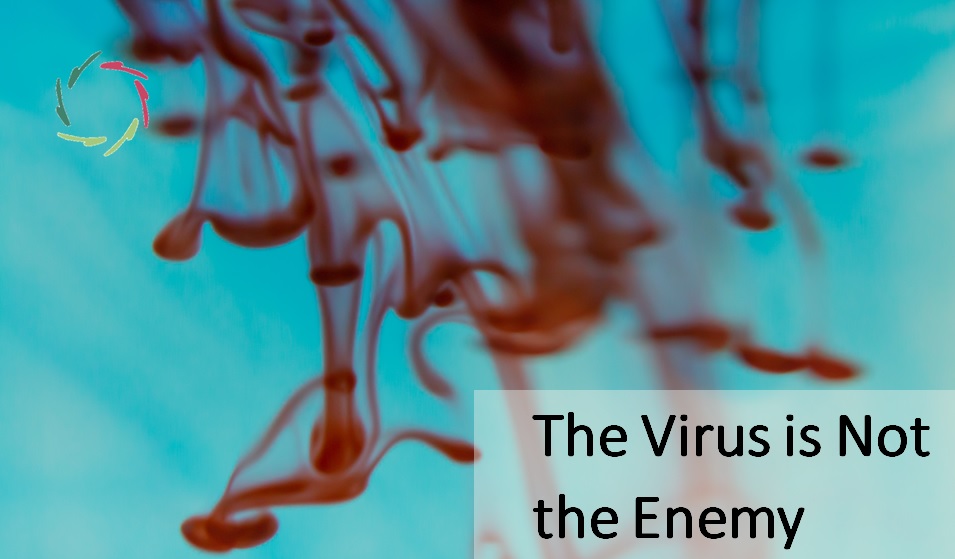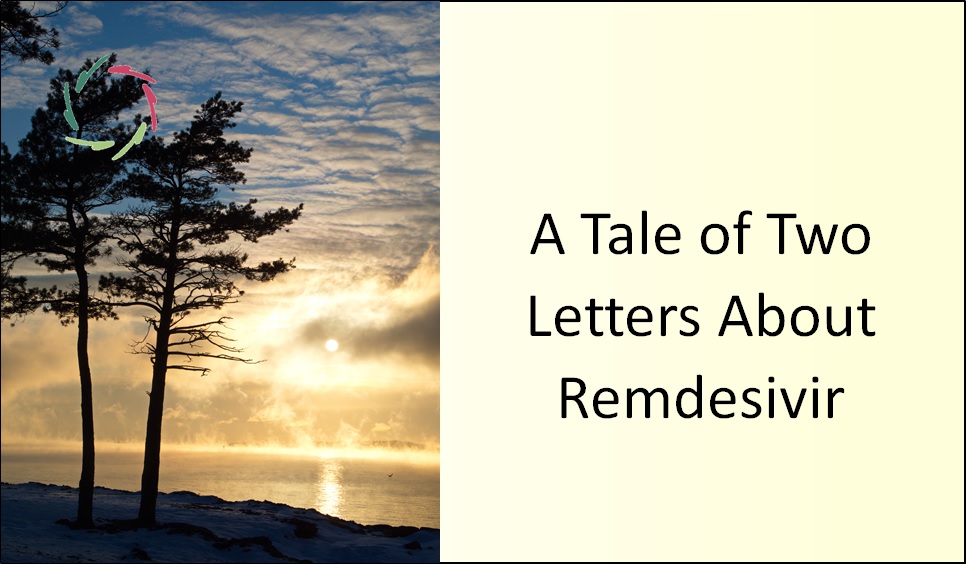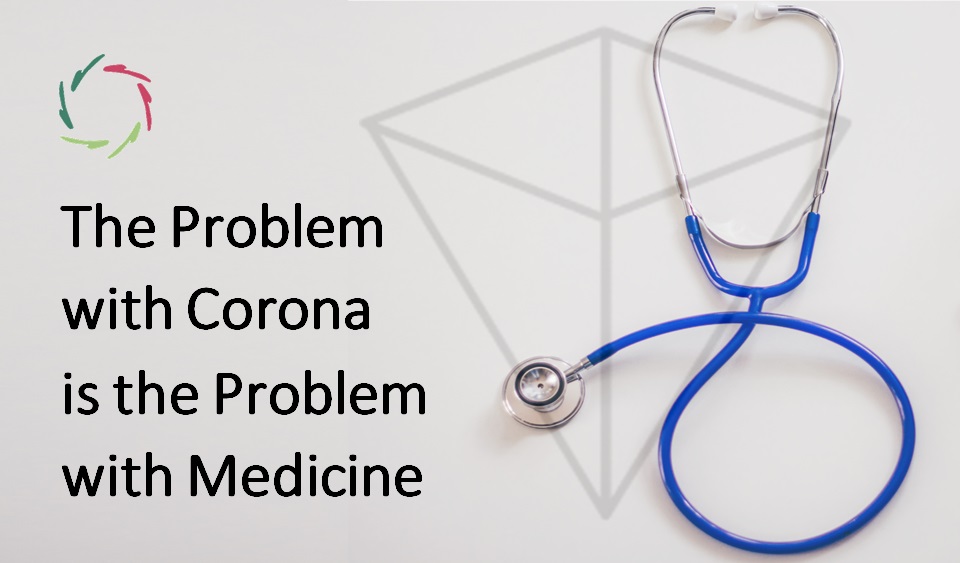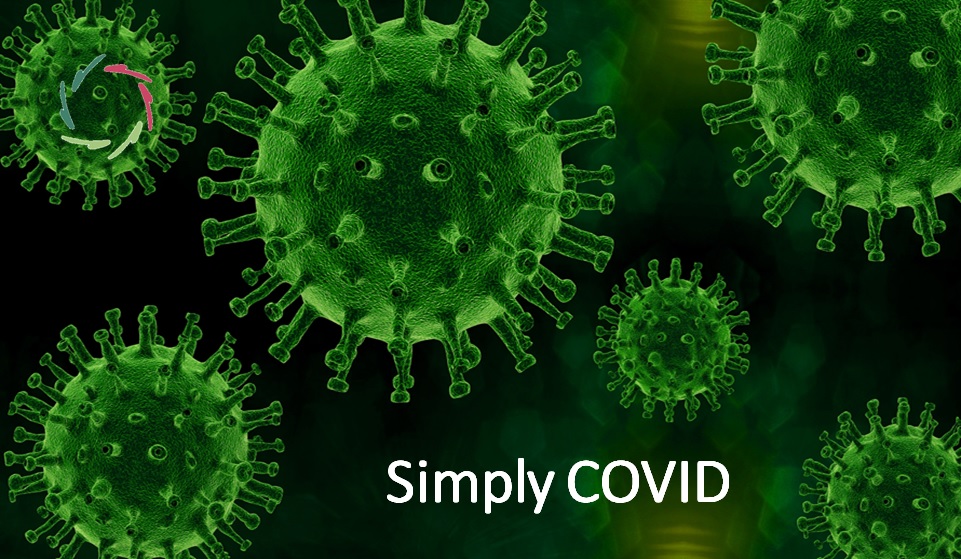19. The Virus is Not the Enemy – War is Not the Answer

This goes further upon chapter 7, written three months and half a million official COVID deaths ago. Did you hear anyone talking about the psyche in causality yet? I mean, anyone except me?
The virus side
The virus is just a piece of RNA that wears a coating when outside of the living cells that it uses as hosts for viral replication. Is a piece of RNA an enemy? It doesn’t choose to hurt anyone, of course. It doesn’t have the ability to choose.
Or one can look at the virus as the conglomerate of all COVID-viruses together. After all, a human body is also a conglomerate of many tiny elements, our body cells. In that sense, there is more complexity. Whereas a simple piece of RNA is more a mechanism than a living being, the whole may be seen more readily as living. It’s even more living than each of us, human beings, since it’s almost immortal. Long after all the presently living humans are dead, the virus will still be alive in our offspring. Moreover, this one whole viral being is intelligent in some sense. It adapted rashly to a new host, us, and is still adjusting. We don’t know at what rate, but the thought is scary. Now, this whole being doesn’t see us as a friend, only as a mechanism for creating its progeny. Also, it doesn’t see us as very intelligent. It finds its ways quite easily, as the numbers show. There is indeed something of an enemy in all this. Its intelligence is ‘brute force learning,’ in other words: pure trial and error. That’s smart enough to keep thriving in competition with human intelligence.
The metaphor side
Calling the virus ‘the enemy’ has, in most cases, other connotations. Fighting the virus, defeating the enemy, killing the virus, getting it on its knees. It seems just a way of talking, but there is frequently more than meets the ear in a way of talking. Enemy-talk conjures up images of aggression, anxiety, and them-the-enemy. At present, huge populations are inoculated with this fodder for the COVID-whirlpool. In that sense, it’s a substantial part of the problem. I would urge to find another metaphor. Scaring people with war-talk into following the rules shows a lack of leadership. It’s bad for health.
A science exists about the use of metaphors in human speech as part of critical discourse analysis. (*) In this, language is seen as part of the way that people seek to promote particular views of the world and naturalize them. It can reveal political, ideological, or cultural investment. It shows underlying assumptions. It can be powerful in deep communication. Language does not only describe the world but co-models the concepts with which people build a world of perceptions and interpretations that then forms the subjective world we live in.
In a worst-case, the war metaphor can be abused by a manipulator. In wartime, people tend to rally behind a savior who promises to protect them or at least be their unitor against the enemy. The ‘leader’ becomes the symbol for the group in a negative and possibly catastrophic sense. This doesn’t need to be consciously concocted by the manipulator. It’s enough for him to follow the underlying cultural stream that leads him there. For this, there needs to be this underlying stream. I’m afraid it is streaming hard nowadays. The reason for this is simple: much cultural-technological change without proper guidance or leadership. Thus comes lousy leadership, a harder flowing stream, and a whirlpool now and then.
Culture includes medicine. The present-day war against the virus is happening in the context of medicine of war: diseases are the enemy, medications the weapons, and doctors the heroes in combat. Unfortunately, present-day medicine is beset with psycho-somatics, in which fighting the disease equals fighting the patient. These are harsh words that I substantiate thoroughly in Your Mind as Cure. Urgently, people should learn to appreciate the mind and its power to get sick as well as to heal in many ways. How we fell into this rut of self-depreciation is a long story of money, status, and power (bad leadership). Anyway, at present, this same rut is followed concerning the virus. It’s not new. It’s a strongly flowing stream. I encounter quite a few people who feel this, yet let themselves flow along for egotistic sake. That’s too bad. In my view, the future mainly depends on them — even their own future, and surely that of their children.
In viral enemy metaphor, I see an idea of conceptual (misguided) righteousness in a mortal battle against … what exactly? Delving deeper, are we getting here at something telling about the core of a much wider human problem, being distress related in the broadest sense?
What are we precisely fighting against?
The all too human side
At present, in Belgium and especially in Antwerp, where I am writing this text, we see a strong upsurge of cases. As a consequence, we are witnessing a second lockdown. To make things softer, we call it a soft lockdown. Great. In several ways, it’s harsher than ever before, probably in an attempt to save the economy. At the start of this book, I wrote about getting angry when this would happen. I am angry now, and will probably be even more. On paper, that is. Rest assured, I keep my friendliness. What strikes me, though, is a different atmosphere, a different look in people’s eyes. There is an enemy in the air, a possible enemy in any encounter. This is according to the metaphor. Anyone can be infected and contagious. Anyone can carry the enemy. Thus, looking at anyone, you might be looking at the enemy. People themselves become each other’s enemy. I would say eventually, but I see it happening now.
In enemy setting and quite dystopically presented, the virus attacks people of whom some get severely ill, probably the ‘weak and vulnerable.’ Many people deem themselves not to be weak. They resist the idea of themselves as being weak, so they defy the enemy by not taking care. The weak ones are, well, the other ones. In the US – and to some degree in other parts of the world – this also becomes a partisan issue. “Don’t be weak!” is like a seldom outspoken, underlying slogan. Weak (or a bit stupid) is the other side of the aisle. Even more, if you are at the correct side of the aisle and you do succumb to the disease, then something is probably wrong with you. You are, deep down, one of the weak. You don’t belong to those worthy of thriving. Then the virus becomes part of nature doing its job in a Malthusian way of the worst kind.
In this dystopic narrative, people are supposed to be careless warriors, oblivious of their own health, and that of anyone else, as a way to filter out the weak. Defiance itself (no mask, no social distancing) becomes an act of bravery. The virus being invisible helps in this regard. Hospitalized patients are also invisible, not “part of us,” because “we are the strong ones.” The enemy is not only the virus anymore, but also the weak ones at the other side, and even within the own ranks. At the same time and from the other side, the enemy is not only the virus anymore, but also the incomprehensibly careless ones.
This dystopia is not my kind of world. How to resist it: by being rational while valuing human depth. I think this is not just my way. It is the only way. Thus, it is a fundamental choice. Fighting against the enemy is not part of this choice, even while being regarded as ‘either enemy or foe.’ The latter is divisive. Within the war metaphor itself, if the virus could laugh, it would be shaking its belly.
I know this is thin ice. I might fall through it. On the other side, many people might fall through the ice, not necessarily virus-related. Meanwhile, it’s worthwhile to learn how to skate.
The immune side
COVID is a psycho-somatic condition. This means that looking at it from a psychological (mainly subconceptual) viewpoint is as worthy and effective as looking at it from a physical perspective. The best way lies in a combination of both. The mind is as powerful as the virus.
Because of this, the war metaphor may do much damage. Note the returning idea within this book: At first, the virus attacks on the basis of a weakened immune system. This is weakened through much chronic stress of many origins, with on top the acute/subacute stress from what is happening to the world, one’s immediate environment, and oneself. The viral enemy takes advantage of this. From the start on, it takes advantage of the COVID-whirlpool for a multiplication of effectiveness. The whirlpool, one can say, is part of the niche to which the virus has adapted very well. This is the consequence of a long-term evolution and a short-term coincidence.
Then the immune system flops into a hard stance. The heavy guns are taken out of the warehouse. The shooting is done with little discrimination. Much of the own tissue gets destroyed. The patient may suffer more from this war-like overreaction than from the direct enemy maneuvers. Now, to what degree can a war metaphor influence such immune reactions? The future will tell. Probably to a diverse degree, relatively seen and in most people. In an absolute sense, it may push many beyond the brink of survival. This way, it becomes crucial.
Meanwhile, the fighting metaphor makes us prone to forget ourselves as part of causality. In a few years, using A.I. and real-world evidence science, we will be able to look much better into such issues. For the moment, there is a huge domain of the unknown and many indications of psychological influences upon the immune system that would astonish many outsiders. Moreover, when the virus comes to vaccinated people, we may hope the interaction doesn’t lead to deadly eosinophilic pneumonia. Focusing too much on the virus-as-enemy, we might forget that this is a real possibility.
The side of human suffering
This historic period brings mental suffering to many people in much broader ways than what is directly virus- and immune-related. Especially those who were already suffering before are having a hard time. I see them as the sensitive ones who, without proper support, are at risk of becoming the vulnerable ones. Also, I see an immense lack of proper support. Worldwide, many of the vulnerable are to be found within the ranks of the defiant ones in an attempt to find solace and protection by showing off, until the armor breaks.
This is part of the COVID-whirlpool, in which all kinds of stress come together with the virus. Scaring people into social distancing is improper, let alone a curfew, as imposed in Antwerp today for the first time since WWII. Meanwhile, sales-shopping goes on for the sake of the economy. Here lies a breakdown of rationality and leadership.
The war metaphor brings additional anxiety and aggression. The enemy is to be feared and fought against. The weak will fare badly. The cause of much suffering lies in auto-aggression or – as I like to call it – inner dissociation. This way, heightening an atmosphere of aggression and war makes people prone to dissociate even further and get caught in a bubble of mere-ego. [See The Journey Towards Compassionate A.I.] The virus-as-enemy metaphor is a huge disservice to many and, eventually, to society as a whole.
The postcoronalia side
This is about the complications after being severely ill. The patient has been defeated by the enemy, almost mortally wounded. I hope that many people in postcoronalia are led to using their inner strength at this stage. Inner strength is not a fluffy concept. It is what can be achieved with the use of autosuggestion and subconceptual processing/communication. There is much science about this, so much that not taking it into account should, nowadays, be seen as the non-scientific way to proceed. The clock has remained the same, but the hand has progressed.
Given the massive immune disturbances that we see happening in COVID, there will be a lot of postcoronalia. What we can expect is, among other things:
- Depression: prevalent in patients after and during periods of systemic inflammation. Probably, there is a two-way influence between depression and inflammation. Both are substantially mediated by the central nervous system.
- Autoimmune disorders (multiple sclerosis, rheumatic arthritis…): also being related to other viral infections, sometimes after many years. New flare-ups are, without any remaining doubt, related to preceding episodes of heightened stress. The psyche is definitely involved.
To diminish the chances of these and other chronic illnesses after COVID, these patients should be supported accordingly from at least the moment they enter the hospital with COVID symptoms. I would also recommend it to those who put themselves or have been put in quarantine. Massive immune reactions may be prevented or relieved, thus also postcoronalia. When complications arrive, of course, all possible support should be given conceptually and subconceptually. Completely discarding one of both is bad medicine.
Fighting for
We are fighting for a better world. The virus is not the enemy but just a part of the environment in which the struggle goes on. It’s not a struggle against, but for, as in an excellent judo competition.
Let’s fight for a world in which humans can work together as much as possible to counter this mishap that has befallen us. Let’s search for a medication that stops the replication of the virus. Let’s not forget our fundamental human values. Let’s learn about ourselves as much as possible, through this ordeal, to make it worthwhile after all. Let’s have an eye for every person dying from COVID, and indeed also from complications on the medical or economic level. For instance, many children are at risk of dying from a lack of food and clean water as a result of necessary lockdowns. Let’s care for them too, even if the rich man’s money has dwindled. Let’s learn together how to prevent the next pandemic. Let’s try to find a vaccine that shields us like a sun blocker shields us from negative sunrays.
Note that none of this is a fighting metaphor. A shield metaphor may be better if not being brought to war again. One may shield oneself from the sun. We don’t fight the sun. We may shield this planet from incoming big meteors. We may shield the next generations from paying the price for our silly conduct. We may shield ourselves from the virus.
We don’t have to fight the virus. It would be much better not to.
(*) A good book about this is How to Do Critical Discourse Analysis: A Multimodal Introduction by David Machin and Andrea Mayr.


